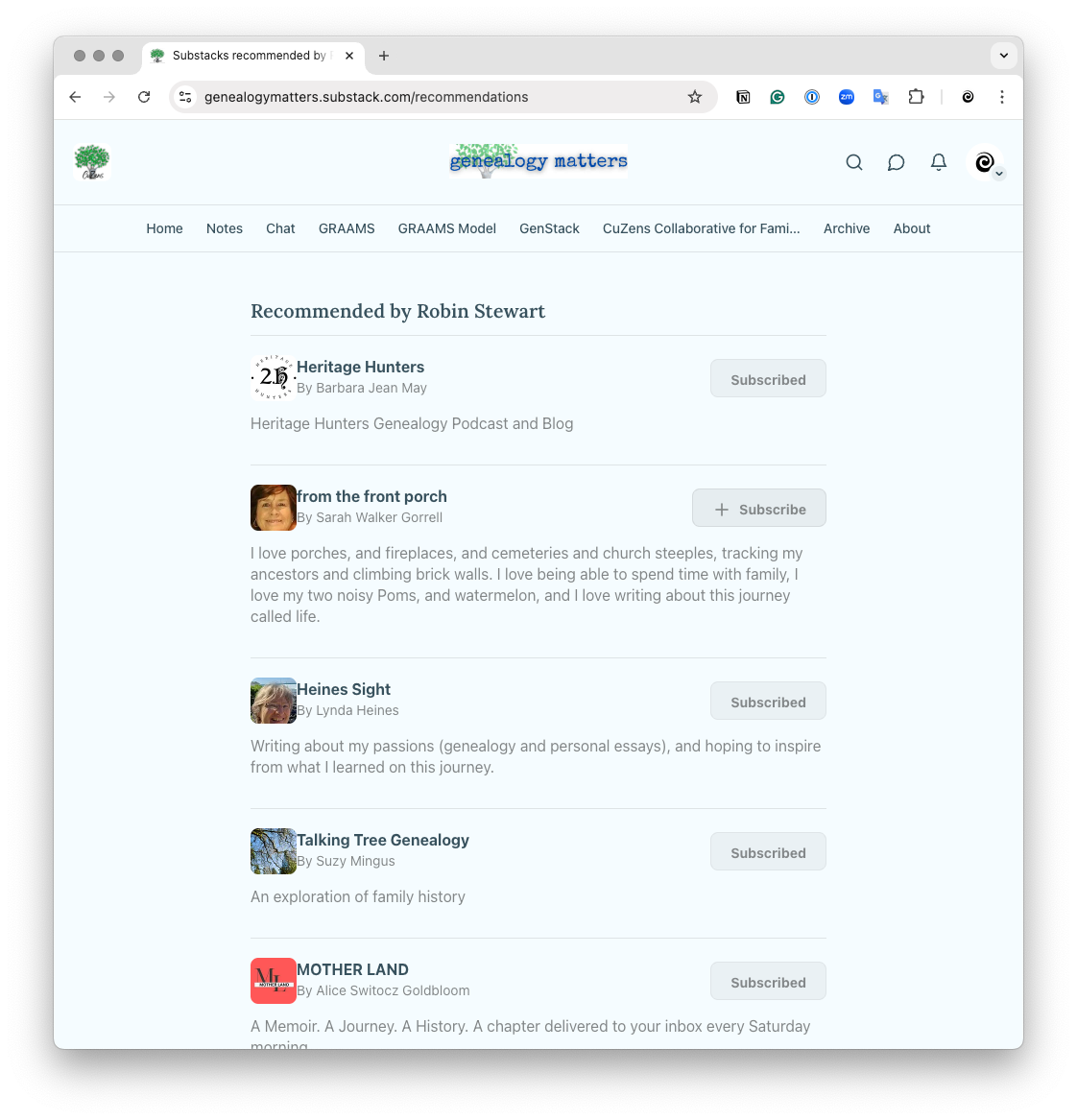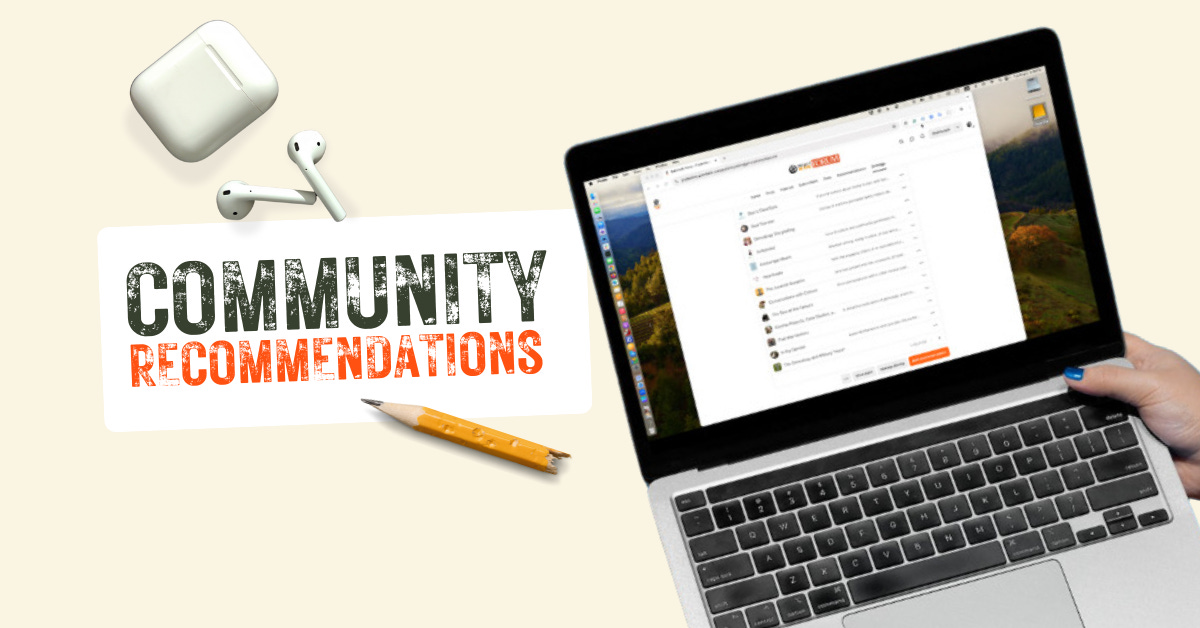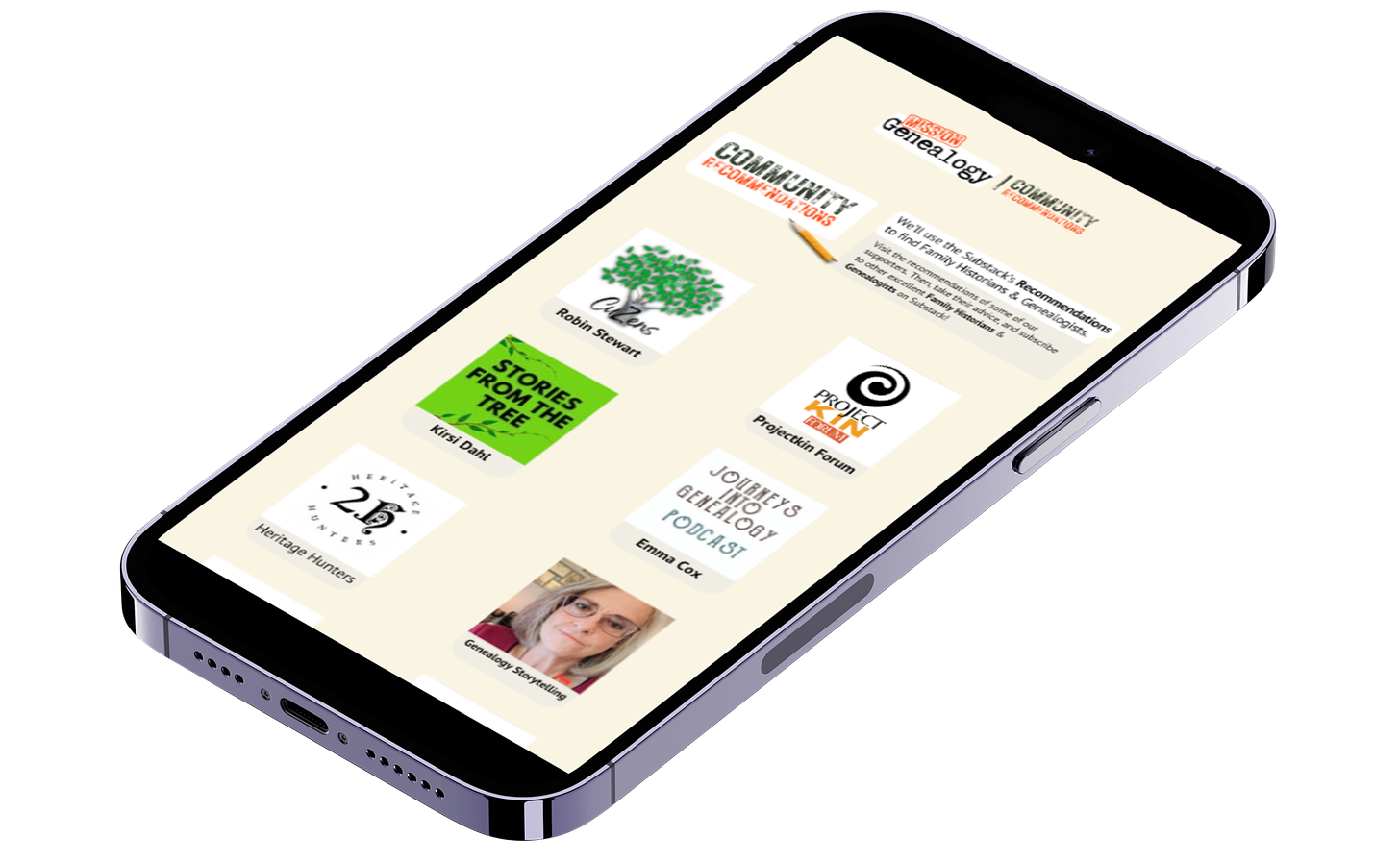Using Recommendations to Bring our Community Together
In genealogy, we've worked collaboratively for generations. Here's how you can apply Substack's built-in recommendations engine to find and support other family historians your area.
Substack is very centered on writing. It’s not only a comfortable place to write, it’s also a great place to read and consume media. As in the real world, the challenge on the platform has been finding others who are as interested in family history as you are. Bluesky and X use hashtags like #FamilyHistory and #Genealogy. Facebook uses hashtags as well as pages and groups.
Substack also creates a feed for you based on interests, but it’s more natural and human-powered. There are two core elements to it:
First is topics.
When you create an account to read using the app or write on substack, you are asked to select at least two topic areas of interest. These are very general, like “History,” “Culture,” or “Politics.” It’s like a librarian asking about your interests before suggesting books to read.
(Currently “Genealogy” is not an available topic area. We’re working on that.)
The second is recommendations.
This simple mechanism allows you to find other Substacks based on what other people tell you are good ones. It’s like reviews, except that they’re collected and viewable by anyone.
If you publish a stack (and that’s a key requirement), you can recommend any other stack to anyone. Sharing what you read (and why1) can strongly influence what others read. This creates a very human sort of referral engine.
If you’re one to read documentation, I suggest starting with Substack’s support pages that walk you through the basic steps:
From that guide, you’ll see how:
To write a recommendation.
See the recommendations of others.
Display your recommendations on your Substack.
Though the guide doesn’t spell this one out, they also tip their hand to a useful trick. If you want, you can add a button that effectively asks for a recommendation like this 👇.
Here’s a tip: To create that yourself, you add a “custom button” to your page(s) and include this as the link2:
Now, let’s explore the compelling power of these recommendations as a tool we can all use to build the genealogy community we want to see here on Substack.
⮕ Here’s the magic 🪄✨
For each Substack publication, there’s a page listing all of their recommendations.
Anyone can view the recommendations of any other Substack.
For example, as the
, I can view the recommendations page for by going to…Tap that link, and you can explore all of the Substacks Robin recommended, many with detailed comments (“written recommendations.”3 )

Even better, next to each one, you’ll find a “Subscribe” button. Tap that, and you’re in. From this screenshot, where *I* am looking at Robin’s recommendations, I see I need to check out
, it’s a new one to me.A slight clarification: Since Substack started allowing writers who publish directly from their profile, they also now allow you to make recommendations. To quote from the chatbot:
“To recommend other publications, use the Recommendations tab found on your Writer's Dashboard. This feature is accessible regardless of whether you publish through a standalone publication or directly from your profile.”
For Mission: Genealogy, we’ve built a “Recommendation Page” of “Recommendation Pages”!
Since
and I are working to build a community of family historians and genealogists here on Substack, we wanted to give that recommendation engine a leg up. So, here’s what we’ve done:We’ve invited a few dozen like-minded collaborators to share their recommendations page on a centralized page so that you can scroll through dozens of substacks and go straight to their recommendations. In that sense, it’s like a “recommendation page of recommendation pages.” You’ll find that page here: MissionGenealogy.org/community.
From there, you can scroll through the list of genealogy- and family history-focused substacks and find others who share your interests.
Do you have a stack you’d like to have included? Send me a message with the button below 👇. We’re looking for family historians and genealogists eager to contribute to the community.4
We’re thrilled to have you join us and are inspired by the support and encouragement swirling through this budding community.
You also have the opportunity to add a written recommendation of a sentence or two. In practice, written recommendations are incredibly compelling, but they’re also hard to write before exploring a stack for the first time. Substack publishers with recommendations can choose among them to feature as “blurbs” on their /welcome pages.
You can always come back to write a recommendation after you’ve read a compelling story, for example. You can make recommendations if you have any publication—even if it’s entirely private. To learn more, about “readers” and “writers” see this video post, or join us during our Office Hours.
Nerdy detail: This will only work when a reader (or the person you’re asking for a recommendation from) is a) logged in to their Substack account and b) has a publication.
When that’s true, the system will pick the first publication alphabetically and go to the “recommendation setting” page, where the reader can add a recommendation. It's sweet. Substack has added a little magic pixie dust to redirect the “your” subnet on the Substack.com domain to the subnet of the logged-in account.
I aim to write thoughtful recommendations for each; it’s just time-consuming. Please take no offense at those who haven’t yet written recommendations.
This is free, it’s not advertising or any kind of pay-for-play. We do reserve the right to make judgements about topic areas and whether they would be of interest to our community, however.









I've just added Lori Olson White's wonderful Substack to our MissionGenealogy.org/Community Recommendations page and gosh... please know we'd love to include you too. Just DM me and I'm on it!
While I'm here, I can strongly recommend the PubStackSuccess newsletter for some terrific pointers on using the Recommendations features — Karen Cherry's work is always superb:
pubstacksuccess.substack.com/p/recommendations-a-substack-super